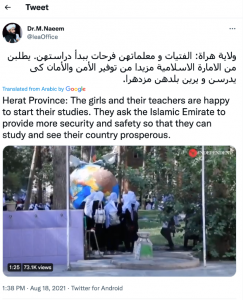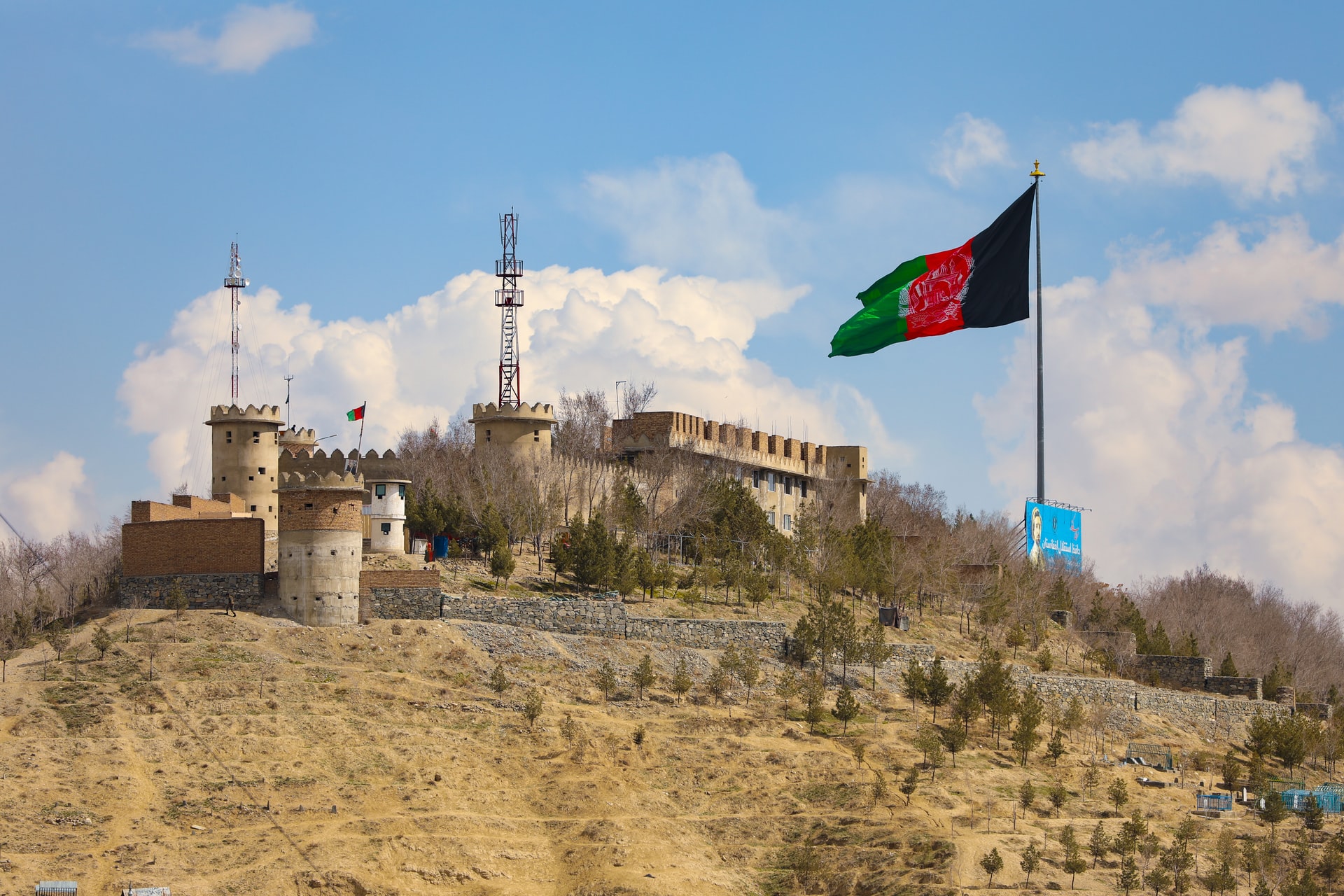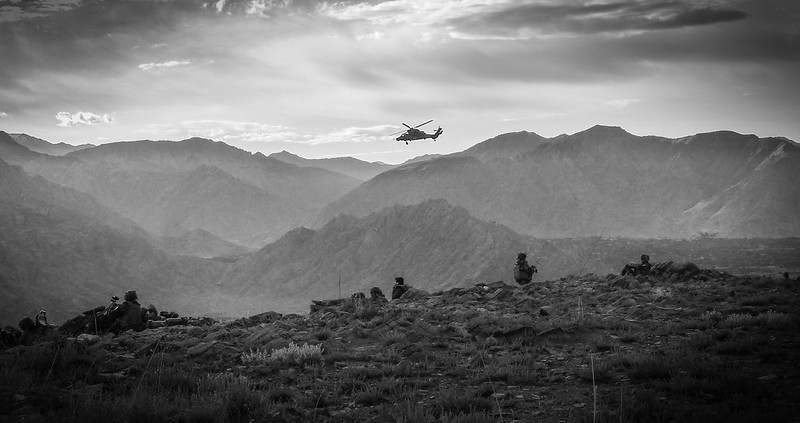The recent and dramatic takeover of Afghanistan by the Taliban in August 2021, coupled with the complete collapse of all civilian governmental presence in the country has introduced a new age of uncertainty for the country. The status of girls & women is especially challenged, confronted as they are with Taliban-interpreted ‘Islamic’ societal mores, as Dana Kamour and Meetra Qutb explain.
In August 2021 Afghanistan fell to the Taliban. The Taliban, an extremist insurgent military group, had ruled Afghanistan from 1996–2001 and maintained pockets of control despite the international military operation. Their regime was characterised by systematic violations against women, cruel corporal punishments, and suppression of education and freedom of religion or expression. Under the Taliban’s extreme and patriarchal interpretations of Islam, women were subject to strict dress codes, prohibited from education, and from any visible engagement in the public sphere (like employment outside the home). Women were not permitted to leave their homes without their mahram (close male relative as chaperone). This remained the case for areas that stayed under the Taliban’s rule, outside of the central government’s control.
In February 2020, the US signed the Doha Agreement with the Taliban. Without consultation with the elected Afghan government, the US guaranteed the complete withdrawal of US troops and the non-combat NATO Resolute Support Mission (RSM) at a later date. Despite warnings from the Afghan government and human rights activists, the US (now under President Biden) went ahead with the withdrawal in August 2021, and Afghanistan fell to the Taliban with the complete disappearance of the elected government and President Ghani and other prominent government leaders fleeing the country. Women in Afghanistan have been forced to flee, to hide to avoid forced marriages and sex slavery, and destroy any evidence of their engagement in Afghanistan’s public life.
The world meanwhile is holding its breath, waiting to see how the Taliban will govern. The US and UK governments appear somewhat appeased by the Taliban’s slick political messaging; their promise that ‘all people of the nation can participate without discrimination’ is highly questionable.
Twitter and Online Statements
Taliban rigorously uses Twitter and posts statements via their ‘Alemarah’ website, which is now closed (see Note below). They use Twitter to make official statements, report on military operations and, from February 2020, have posted regular updates on their peace negotiations and other engagements. They also use other electronic & social media platforms such as email, WhatsApp, Viber and Telegram to communicate with journalists and the traditional media.
The Taliban post in various languages including the official languages of Afghanistan (Pashto and Farsi/Dari), Arabic, English, and Urdu. The language of the tweets differ based on the context, importance of the message, and target audience. Tweets that are aimed at attracting the international community and/or define the Taliban’s stance about peace talks are posted in English (with the same content posted in Farsi/Dari and Pashto). However, with the capture of Kabul (in August 2021) there have been few English statements; more have been in Arabic, signalling a shift in orientation, and demonstrative of the US’ loss of significance to them.
Women’s Rights
Since the signing of the US-Taliban Agreement last year, we have collected online statements and tweets by Taliban spokesmen relating to women’s rights and education, as part of a larger project.
Our analysis shows that the Taliban developed new narratives related to women’s rights and education, and continually applied ‘Islamic’ frames to avoid setting out their policies in concrete terms. Now that they are in power, their claims will be put to the test; unfortunately, evidence thus far from the ground suggests their words mean very little.
Since the start of the peace process, the Taliban have made persistent claims guaranteeing women’s security in Afghanistan. In the now-defunct Alemarah website, they claimed to have ‘a clear and universal policy regarding rights of women’, and committed to ‘eradicating all unlawful customs and traditions against women’. Since taking Kabul, the Taliban have publicly stated they will allow women to continue to be active in society, benefit from their rights, and work ‘shoulder to shoulder’ with the Taliban within Islamic sharia. A tweet by spokesman Dr M. Naeem shows a woman in a full burqa ‘happy with the coming of the Mujahideen’ (Image 1) as it is now ‘safe and secure’ for women to go out to work.

Image 1: Screenshot of Tweet from Dr M. Naeem @leaOffice, 18 August 2021, 1:42pm
In Taliban-controlled Kabul, however, the reality is very different. Women are unable to continue with their normal lives. Afraid to leave the house, their ‘modern’ clothes and independence have been exchanged for burqas and mahram. Women have disappeared from the streets and face beatings for wearing the hijab ‘incorrectly’; and women who were involved in issues like women’s rights are now in hiding, missing, or have fled the country.
Outside the capital, in Balkh, women have been ordered not to leave their homes without a burqa or mahram. Women in Kandahar and Herat have been escorted home from work by gunmen, and told their male relatives will replace them in their jobs. In the provinces of Badakhshan and Takhar, the Taliban ordered religious leaders to provide them with a list of girls over 15 and widows under 45. The threat of forced marriages and sexual enslavement to Taliban fighters has caused thousands to flee. This is the antithesis of women’s rights and a crime against humanity.
Education for Women and Girls
During the peace talks in Doha in 2020, the Taliban emphasised the importance of education in a number of statements ‘because this is the basic right of all Afghans’. They also wanted to ‘guarantee all human and legal rights of every child, woman and man’. In this, the Taliban presented themselves as a progressive force in favour of education for all citizens of Afghanistan, regardless of gender even though in areas held under Taliban control, up until their recent resurgence, their record for girl’s education was poor and inconsistent. Very few areas allowed girls past puberty to attend school; some prevented girls from gaining an education at all. Where the Taliban held influence over the curriculum, religious education was prioritised at the expense of other subjects.
Following their recent takeover of the country, the Taliban have released official videos of girls attending school in Herat. Spokesman Dr M. Naeem tweeted that ‘girls and their teachers are happy to start their studies under the protection of the “Islamic Emirate” (the Taliban)’ (Image 2). However, some schools and universities have reopened but girls and boys’ classes have been separated by universities. For example, at Kabul University ‘a curtain divides male, female students’. Such statements also forget the intimidation and threats made to female students and educators by the Taliban, which has significantly reduced the number of girls accessing education. There are several hundred fewer teenage girls at Herat University compared to last year. In Injil district in Herat City, pamphlets were distributed with official ‘Islamic Emirate’ seals ordering teachers to stop educating girls. Fear has therefore already proven effective in preventing women from accessing education and pushed female educators into hiding.

Image 2: Screenshot of Tweet from Dr M. Naeem @leaOffice, 18 August 2021, 1:38pm
The ‘Islamic’ Frame
The most dominant and frequent frame applied by the Taliban in their online messaging is that of ‘Islamic values’ within an ‘Islamic system’. The Taliban assure (on Alemarah) ‘that all male and female compatriots shall be given their due rights under the shade of a just and true Islamic government’. All statements regarding women’s rights and education therefore come with a significant caveat.
The deployment of this framework undermines any true guarantees for women’s rights and education, as they are generally understood. The question that remains is: what are these values and what does this system actually look like? The Taliban’s religious ideology itself is an obscure amalgamation of Islamic ideology. It is based on the Deobandi School, and characterised by fundamentalist interpretations, opposition to innovation, and injunctions against women outside the home, according to Rasanayagam (2003). The Taliban have never produced an Islamic manifesto or any historical or theological analysis grounding their perspectives in Islam. As Ahmed Rashid (2010) explains, the Taliban are poorly tutored in Islamic history and sharia; they are detached from theoretical developments and debates within the Muslim world, making meaningful engagement in doctrinal discussions impossible, even with fellow Muslims.
This was evident in their first press conference since seizing Kabul, designed to sooth the international community, where their spokesman Zabihullah Mujahid persisted with vague guarantees. Women, he said, will be given rights, education, and opportunities within an ‘Islamic framework’; even when pressed, at this opportune moment, the Taliban were unwilling to set out their framework in clear terms.
Looking Ahead
The Taliban’s promises and guarantees must be recognised for what they are: little more than smoke and mirrors. The international community must not remain silent, but instead use all peaceful means in support of all Afghan women. For those who are able to or wish to leave, there must be safe and legal routes available with long-term solutions in place within host countries. For women who remain within Afghanistan, all peaceful means must be used to force the Taliban to comply with international law and stop their abuse of women’s and human rights. There is no time to waste in vain hope that the Taliban’s promises will be fulfilled on their word alone.
Note on quotes from ‘Alemarah’ website: The ‘Alemarah’ website was live at the time of collecting data for this research; it has since been closed down; quotes from the now-defunct webpages have nonetheless been hyperlinked for academic record.
Banner image © Ehimetalor Akhere Unuabona, ‘Stop killing Afghan Protest in London’, August 2021, Unsplash.
The views expressed in this post are those of the author and not of the ‘South Asia @ LSE’ blog, the LSE South Asia Centre or the London School of Economics and Political Science.







